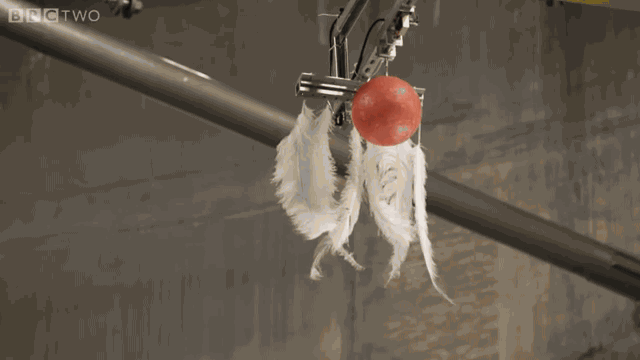3.5 Inertial vs. Gravitational Mass
3 min read•june 18, 2024
Peter Apps
Kashvi Panjolia
AP Physics 1 🎡
257 resourcesSee Units
Learning Targets
Gravitational mass is the property of an object or a system that determines the strength of the gravitational interaction with other objects, systems, or gravitational fields.
- a. The gravitational mass of an object determines the amount of force exerted on the object by a gravitational field.
- b. Near Earth’s surface, all objects fall (in a vacuum) with the same acceleration, regardless of their inertial mass.
Inertial Mass
Inertial mass and gravitational mass are two different ways of measuring the amount of matter in an object. Inertial mass is determined by measuring the force required to accelerate an object. This is described by Newton's second law of motion, which states that the force required to accelerate an object is equal to the product of the object's mass and acceleration (F=ma). The greater the inertial mass of an object, the greater the force required to accelerate it. For example, a bowling ball has a larger inertial mass than a feather, so a greater force is required to accelerate the bowling ball than the feather. When you try to lift the bowling bowl, it is harder to lift than a feather. 🪶
Gravitational Mass
Gravitational mass, on the other hand, is determined by measuring the strength of the gravitational force exerted by an object on other objects. The gravitational force exerted by an object is determined by its gravitational mass and the distance between it and the other object(s). The strength of the gravitational force is described by Newton's law of universal gravitation, which states that the gravitational force exerted by an object is proportional to the product of the gravitational masses of the two objects and inversely proportional to the square of the distance between them (inverse-square relationship). For example, the Earth has a larger gravitational mass than a bowling ball, so the Earth exerts a greater gravitational force on the bowling ball than the bowling ball exerts on the Earth. The Earth has an even larger gravitational mass than a feather, and this is why, when you drop a bowling ball and a feather on the surface of the Earth, the bowling ball will hit the ground faster. 🌎

GIF courtesy of Vox.
Gravitational Mass vs. Inertial Mass
The value for the inertial mass and gravitational mass are always found to be equal for all objects. This is because inertial mass and gravitational mass are two different ways of measuring the amount of matter in an object. One such experiment demonstrating their equivalence was the famous Apollo 15 experiment conducted by astronaut David Scott on the surface of the Moon. Because there is no atmosphere on the Moon, Scott was able to drop a feather and a hammer at the same time and show that they landed at the same time, proving that in the absence of air resistance, all objects fall at the same rate -- the acceleration due to gravity.

In a vacuum chamber, all objects reach the ground at the same time. GIF courtesy of EducationalGifs.
We can use this experiment to make the statement that all objects near Earth's surface fall with the same acceleration, regardless of their inertial mass.
It is important to note that the acceleration due to gravity is different from the gravitational force. While the acceleration due to gravity is the same for all objects, the gravitational force is not. The gravitational force is calculated using F=Gm1m2/r^2, which is Newton's Universal Law of Gravitation. As derived in the previous guide, however, the acceleration due to gravity is not dependent on the mass of the object being dropped -- only the mass of the planet. The equation for the acceleration due to gravity is g=GM/r^2, where M is the mass of the planet. As you can see, there is no mention of the mass of the object being dropped in this equation, so the acceleration due to gravity is constant for all objects at a certain distance away from the center of the planet.
The idea that inertial and gravitational mass satisfy conservation principles means that the total amount of matter in a closed system remains constant and is conserved, regardless of the forces acting on it. This is known as the Conservation of Mass.

Image courtesy of quickmeme.com.
🎥Watch: AP Physics 1- Unit 3 Streams
Browse Study Guides By Unit
👟Unit 1 – Kinematics
🌀Unit 2 – Dynamics
🚀Unit 3 – Circular Motion & Gravitation
⚡️Unit 4 – Energy
⛳️Unit 5 – Momentum
🎸Unit 6 – Simple Harmonic Motion
🎡Unit 7 – Torque & Rotational Motion
💡Unit 8 – Electric Charges & Electric Force
🔋Unit 9 – DC Circuits
🔊Unit 10 – Mechanical Waves & Sound
📚Study Tools
🧐Exam Skills

Fiveable
Resources
© 2025 Fiveable Inc. All rights reserved.